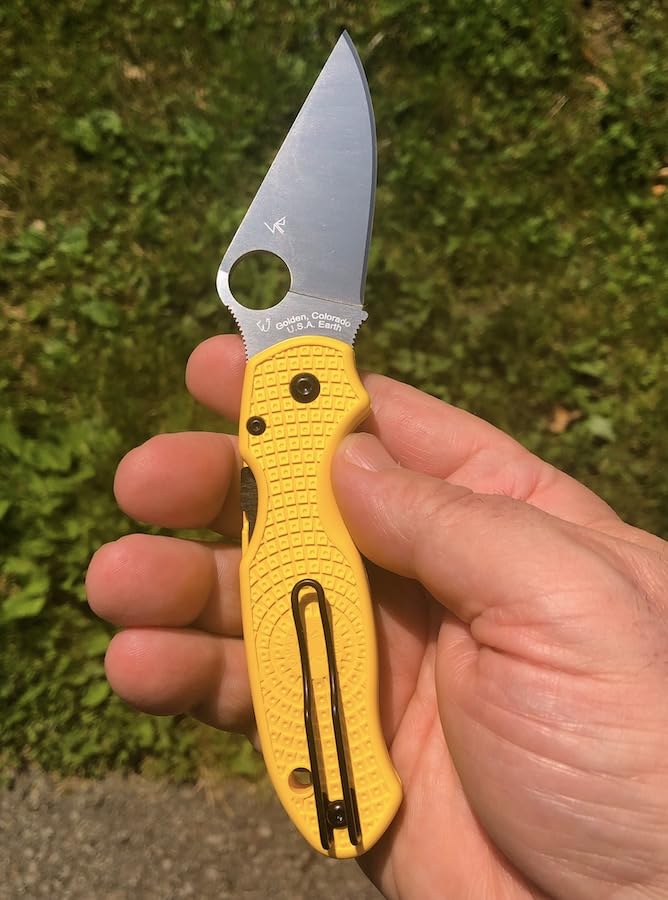Crucible Industries CPM MagnaCut and CPM M4 are made using powder metallurgy, which produces a finer, more homogeneous structure compared to conventional cast steel.
CPM MagnaCut is a stainless steel containing vanadium, niobium, and a high 10.7% chromium for corrosion resistance.
CPM M4 is a non-stainless tool steel with high vanadium and molybdenum for wear resistance. It achieves high hardness and is tougher than other high-speed steels, but lacks stainless properties.
This comparison looks specifically at CPM M4, the powder metallurgy variant of M4 steel.
The conventional cast version of M4 may have somewhat inferior properties, particularly in edge retention and wear resistance.
MagnaCut vs M4 Steel At A Glance
| Property | MagnaCut Steel | CPM M4 Steel |
|---|---|---|
| Corrosion Resistance | Excellent corrosion resistance as a stainless steel . | Poor corrosion resistance, a non-stainless tool steel. |
| Toughness | Very high toughness | Moderate toughness lower than MagnaCut. |
| Hardness | Aim hardness between 61-62.5 HRC | Aim hardness level between 62-64 HRC |
| Edge Retention | Good edge retention but slightly lower than CPM M4. | Very good edge retention and abrasion resistance. |
| Ease of Sharpening | Good ease of sharpening better than M4 Steel | Moderate ease of sharpening |
Corrosion Resistance
MagnaCut has significantly better corrosion resistance compared to M4 steel. MagnaCut is a stainless steel while M4 is a non stainless steel.
In saltwater corrosion testing, MagnaCut performed on par with high-end stainless steels like LC200N and Vanax, with no visible rust after 72+ hours of exposure.
In contrast, M4 is not stainless and will readily rust and corrode when exposed to moisture or salt.
MagnaCut level of corrosion resistance exceeds other stainless steels such as 20CV, S110V, and S35VN.
The lack of chromium carbides in MagnaCut results in its excellent corrosion resistance, since chromium carbides lead to depletion of chromium in the surrounding metal matrix.
For most knives, especially those used outdoors, MagnaCut’s high corrosion resistance gives it a distinct advantage over a non-stainless steel like M4.
Toughness
MagnaCut steel demonstrates significantly better toughness than M4 steel in toughness testing.
In Charpy impact toughness tests, MagnaCut reached 38 ft-lbs at a hardness level of 62.5 HRC, whereas M4 reached about 28 ft-lbs at almost the same hardness of 63.5 HRC.
MagnaCut was designed to have toughness exceeding previous powder metallurgy stainless steels, with levels similar to non-stainless steels like CPM-4V.
The very fine carbide size of MagnaCut and the addition of niobium to refine the grain leads to its high toughness.
This higher toughness gives MagnaCut an advantage for larger knives that undergo impacts, as it resists chipping and edge damage better than M4.
The high toughness also allows MagnaCut to be used for thinner-edged knives with acute edge angles, as the edges are less prone to chipping.
Hardness
According to Dr Larrin, MagnaCut can reach a maximum hardness of up to 65 HRC with proper heat treatment, including the use of cryogenic processing.
In contrast, the maximum hardness listed for M4 steel is 66 HRC. However, the recommended heat treatment for MagnaCut results in a hardness range of 61-62.5 HRC, while M4 is typically heat treated to 62-64 HRC according to its datasheet.
At these hardness levels, MagnaCut and M4 have fairly similar hardness capabilities, though M4 can potentially achieve slightly higher hardness values.
The higher hardness possible with M4 leads to greater wear resistance and edge retention for knives.
Edge Retention
CPM M4 demonstrates slightly better edge retention and wear resistance compared to MagnaCut.
Typical hardness levels for M4 range from 62-64 HRC. The recommended heat treatment for MagnaCut results in hardness between 61-62.5 HRC.
At these common overlapping hardness ranges, M4 is expected to perform better in terms of resisting abrasive wear and maintaining sharpness during cutting.
For knives, this means that M4 knives are likely to retain their edge sharpness better than MagnaCut knives when hardness values are equal.
Ease of Sharpening
MagnaCut knife steel is easier to sharpen than M4 steel.
As evidenced by the micrographs MagnaCut has an overall finer carbide structure compared to the more clustered carbides in M4.
The finer carbide size and structure of MagnaCut have a better potential for ease of sharpening compared to M4 with its larger carbides.
Knife maker Devin Thomas reported that MagnaCut sharpened well even with regular aluminum oxide stones (Shapton Glass stones), not just diamond or CBN abrasives that are harder than vanadium carbide.
Final Thoughts on MagnaCut vs M4 Steel
MagnaCut is an impressive new stainless blade steel that offers an optimal combination of properties for many knives.
MagnaCut has an advantage over CPM M4 in toughness, corrosion resistance, and reported ease of grinding and sharpening.
After gaining experience with both knife steels, MagnaCut stands out to me as having very balanced capabilities making it an excellent all-around stainless steel choice for tough, durable knives.
MagnaCut also provides excellent corrosion resistance, being stainless steel, whereas CPM M4 can readily rust.
But CPM M4 remains a viable non-stainless option when ease of grinding, corrosion resistance, and high toughness are less critical factors.
Feedback from other users also indicates that MagnaCut has excellent sharpenability and attainable edge sharpness thanks to its fine carbides.
